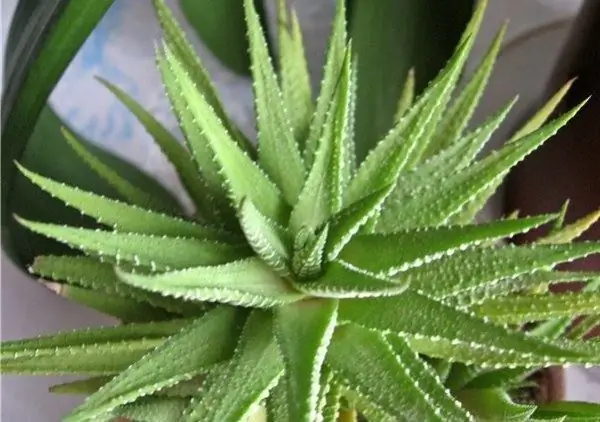The genus of agave includes about 300 species, however, as houseplants, the most common are the Queen Victoria agave, filamentous and American.

The Queen Victoria agave is a rather diminutive plant (in comparison to other species). The length of its leaves usually does not exceed twenty centimeters. The tops are brown-tipped and rather stiff. In the middle and along the edges there are white stripes that peel off with white fibers.
The rosette of agave leaves is small. Its distinguishing feature is the presence of dry fibers along the edge.
American agave has powerful and fleshy bluish-green leaves. There are also forms with yellow and green stripes along the edge. In nature, they reach about a meter in length. Thanks to its impressive size and unusual leaves, American agave can be an unusual decoration for your home or office.
Agave is a rather unpretentious plant, however, it prefers a location on the sunny side. In winter, it should be kept in a cool and dry place, such as a windowsill, but there should be no radiators underneath. In summer, it is advisable to expose the plant to the air (for example, on a balcony or in a garden) and water it moderately.
Agave is propagated using root suckers. To do this, in the period from April to July, it is necessary to separate them from the mother plant, then slightly wither for several hours and plant them in bowls with moist coarse sand. Agave also reproduces well by seeds. In March, sow them in containers to a depth of no more than one centimeter and place them in a warm place (the temperature required for their germination should be about 25 degrees). Once the seedlings are strong, plant them in separate pots.
Agave needs a fairly heavy soil. Make a mixture of clay turf, leafy soil and sand in a ratio of 1: 1: 0, 5. Also arrange good drainage. Place broken clay shards or bricks at the bottom of the pot, or add a layer of expanded clay three to five centimeters depending on the size of the pot. Agave can also be grown hydroponically.
Young plants should be replanted annually in late April - early May, and adults after two or three years.






